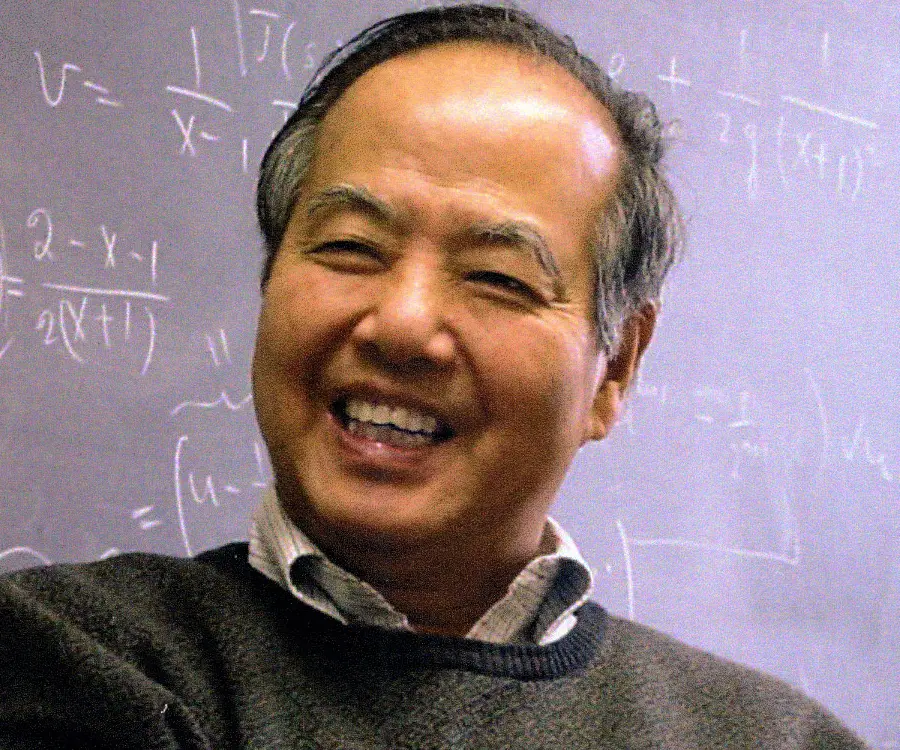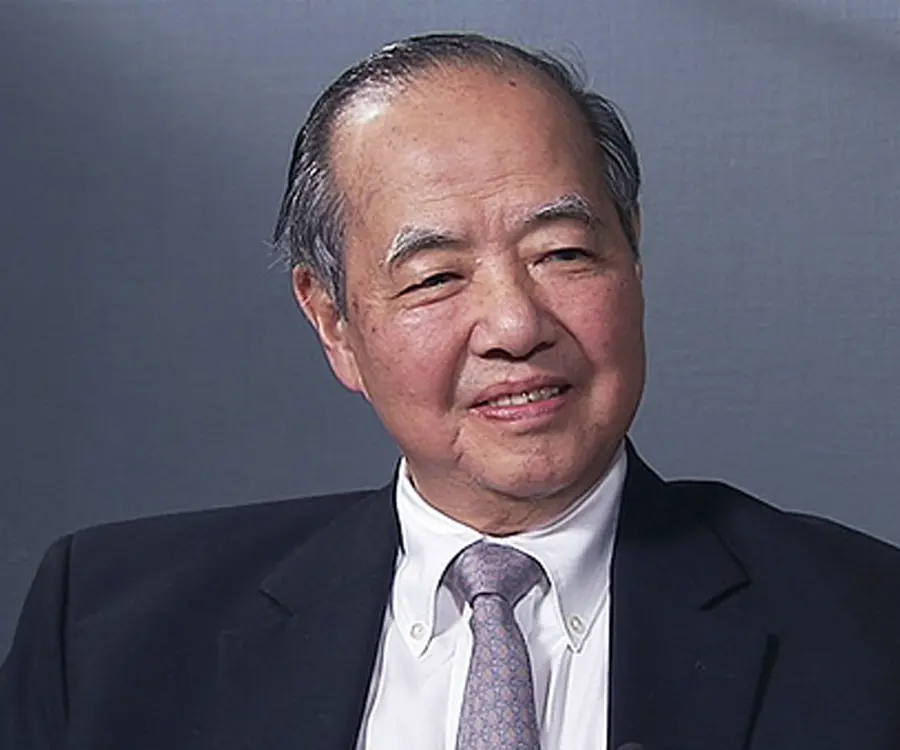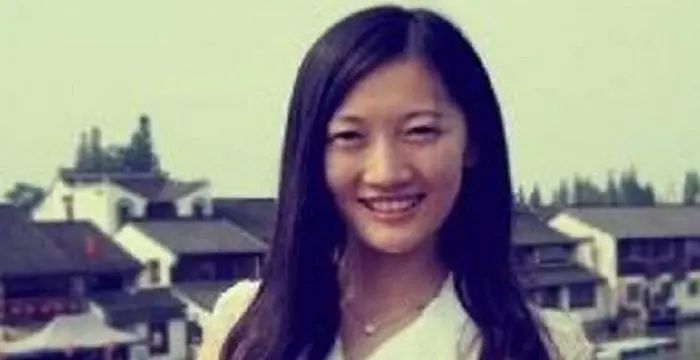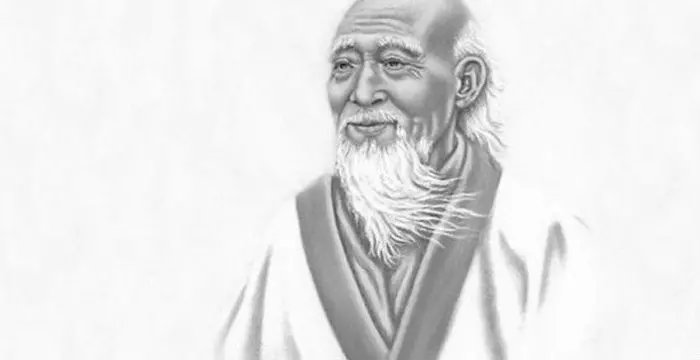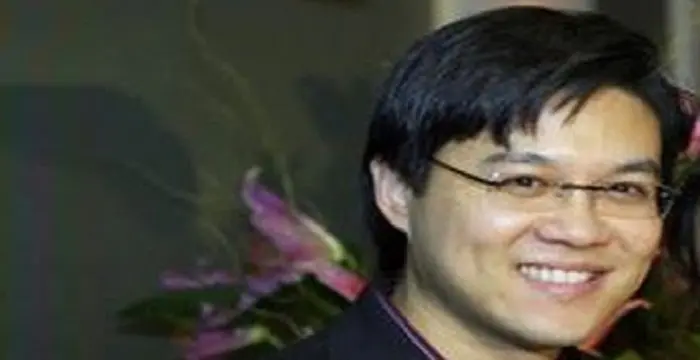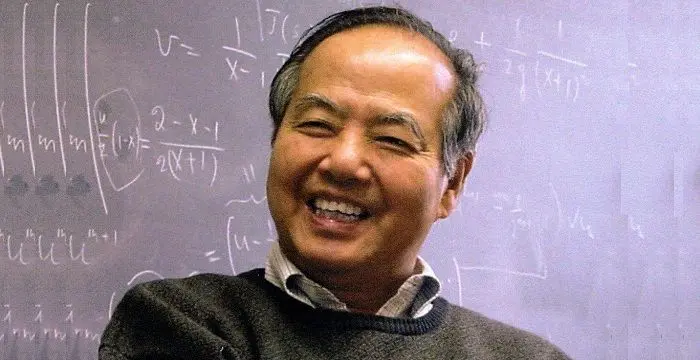
Tsung-Dao Lee - Physicists, Family and Childhood
Tsung-Dao Lee's Personal Details
Tsung-Dao Lee is a distinguished Chinese-American physicist, who received the ‘Nobel Prize in Physics’ in 1957
| Information | Detail |
|---|---|
| Birthday | November 24, 1926 |
| Nationality | Chinese, American |
| Famous | University Of Chicago, Scientists, Physicists |
| Spouses | Hui-Chung Chin |
| Known as | T. D. Lee |
| Childrens | James, Stephen |
| Universities |
|
| Notable Alumnis |
|
| Birth Place | Shanghai, China |
| Born Country | China |
| Gender | Male |
| Father | Tsing-Kong Lee |
| Mother | Ming-Chang Chang |
| Sun Sign | Sagittarius |
| Born in | Shanghai, China |
| Famous as | Physicist |
// Famous Scientists
Juliane Koepcke
Juliane Koepcke is a German-Peruvian biologist, who was the lone survivor among the 92 passengers and crew of the ill-fated LANSA Flight 508 that crashed in the Peruvian rainforest on 24 December 1971. Know more about her life in this biography.
Henry Cavendish
Henry Cavendish was a theoretical chemist and physicist, renowned for discovery of hydrogen and calculation of the mass of earth. To know more about his childhood, profile, timeline and career read on
Konstantin Tsiolkovsky
Konstantin Tsiolkovsky was a Russian rocket scientist and a pioneer of astronautics. This biography provides detailed information about his childhood, family, personal life, career, achievements, etc.
Tsung-Dao Lee's photo
Who is Tsung-Dao Lee?
Tsung-Dao Lee is a distinguished Chinese-American physicist, who jointly received the ‘Nobel Prize in Physics’ in 1957 with another physicist Chen-Ning Franklin Yang for their significant work on the violations of the principle of parity conservation. The duo established theoretically that conservation of parity, one of the fundamental laws of quantum-mechanics is violated in the nuclear procedure that result in emitting alpha or beta particles, that is to say in weak nuclear reagents. This discovery led to significant alterations and refinements in the field of particle physics. They concluded that tau-meson and theta-meson, which were earlier comprehended to be different particles due to their decaying by modes of differing parity, are actually same (presently called K-meson). Their theory was experimentally validated by fellow physicist Chien-Shiung Wu in 1957. Apart from parity violation, Lee is also known for his work in non-topological solitons and soliton stars, relativistic heavy ion (RHIC) physics and the Lee Model. At present he is the University Professor Emeritus at ‘Columbia University’ where he taught for almost six decades. While he and Yang became first Chinese Nobel Laureates, he was youngest Nobel laureate since Second World War till 2014 when Malala Yousafzai received ‘Nobel Peace Prize’. After becoming a naturalized American citizen in 1962, he remains the youngest American ever to receive a ‘Nobel Prize’.
// Famous University Of Chicago
Satya Nadella
Satya Nadella is the current CEO of Microsoft. This biography provides detailed information about his childhood, profile, career, net worth & timeline
Emily Greene Balch
Emily Greene Balch was an American economist, sociologist and pacifist who won the 1946 Nobel Peace Prize. This biography of Emily Greene Balch provides detailed information about her childhood, life, achievements, works & timeline.
Susan Sontag
Susan Sontag is an American critical essayist, cultural analyst, novelist, political activist, filmmaker and playwright of international repute. Read on to find out more about her childhood, career, profile and timeline.
Childhood & Early Life
He was born on November 24, 1926, in Shanghai, China, to Tsing-Kong Lee and Ming-Chang Chang as the third child among five sons and one daughter. His father, one of the first graduates of ‘University of Nanking’, was by profession a merchant and chemical industrialist.
He attended secondary schools in Shanghai, Suzhou and Jiangxi. His high school education was interrupted because of Second Sino-Japanese war, which prevented him to earn secondary diploma.
However he directly applied to ‘National Che Kiang University’ (presently ‘Zhejiang University’) in 1943 and was granted admission. Although initially he enrolled in the Chemical Engineering department, he gradually took interest in physics. Guided by physics professors like Kan-Chang Wang and Shu Xingbei, he took transfer to the Physics department.
His studies were again interrupted due to further Japanese invasion. Lee again resumed studies in 1945 at ‘National Southwestern Associated University’ in Kunming under the guidance of Professor Ta-You Wu.
He was nominated by Professor Ta-You Wu for a Chinese government fellowship to undergo graduate studies in the US. Therefore after completing his sophomore year at ‘National Southwestern Associated University’, in 1946 he moved to the US and joined ‘University of Chicago’, where he came under the guidance of Professor Enrico Fermi.
In 1950 he completed PhD under Professor Fermi submitting thesis on ‘Hydrogen Content of White Dwarf Stars’.
Career
In 1950 he joined ‘University of California’ at Berkeley as a research associate and lecturer in physics and served there till 1951. He also worked briefly at ‘Yerkes Astronomical Observatory’ at Lake Geneva, Wisconsin.
From 1951 to 1953 he served at ‘Institute for Advanced Study’ in Princeton, New Jersey. Here he got reunited with Chen-Ning Franklin Yang whom he knew from his Kunming days.
Soon he became reputed for his scientific works in astrophysics, statistical mechanics, elementary particles, condensed matter physics, field theory and turbulence.
In 1953 he was inducted as Assistant Professor by ‘Columbia University’ where he started off working on renormalizable field theory model, better known as ‘Lee Model’. In 1955 he was made Associate Professor and in 1956 a Professor at the university, thus becoming the youngest full professor ever in the faculty of the university. He retired in 2012.
He remained closely associated with Yang even after departing from Princeton and worked out a regime to meet once a week whether in Princeton or in New York City.
In 1956 Lee and Yang turned their focus on a subatomic particle called K-meson that was discovered a few years back. The particle which appeared to be distinct confused physicists as it decayed in two different schemes such that the physicists were convinced of existence of two different types of K-meson - theta meson and tau meson.
Lee and Yang concentrated on the extensive experimental evidences which indicated that theta meson and tau meson were same. The only conflicting issue that was preventing confirmation of the two being identical particles was that the two had opposite parity, one had even parity while another had odd parity.
After three weeks of intensive research in 1956 they concluded that in some form of reagents, parity is violated. They established that conservation of parity is violated in the nuclear process that results in emitting alpha or beta particles that is in weak nuclear reactions and suggested that tau-meson and theta-meson are actually same particles.
As law of parity conservation restricts single particle from having decay modes displaying opposite parity, the sole plausible conclusion that can be reached was that at least for weak interactions parity is violated. A series of experiments were suggested by them to test their hypothesis.
On June 22, 1956, a paper titled ‘Question of Parity Conservation in Weak Interactions’ which mentioned the fundamental elements in the Lee-Yang theory, was sent to American peer-reviewed scientific journal, ‘Physical Review’.
Chien-Shiung Wu, one of their colleagues conducted tests devised by them after about six months, first at ‘Columbia University’ and thereafter at ‘National Bureau of Standards’ and validated their theory in 1957.
Other scientific contributions of Lee included initiating the field of high energy neutrino physics with collaborators in the early 1960s; elucidating a general procedure called KLN theorem with M. Nauenberg in 1964 that deals with divergences associated with particles of zero rest mass; establishing field of non-topological solitons with collaborators in 1975 leading to his work on soliton stars and black holes in the 1980s and 1990s; and developing a new procedure with R. Friedberg to solve the Schrödinger Equation.
During 1974-75 many papers of Lee on ‘A New Form of Matter in High Density’ were published leading to the modern field of RHIC physics, which is at present dominating the field of high energy nuclear physics.
He remained director of the ‘RIKEN-BNL Research Center’ from 1997 to 2003 and since 2004 he is the Director Emeritus at the center.
Following re-establishment of China-America relations with the PRC, he visited China with his wife and attended number of seminars, delivered lectures and also organised ‘China-U.S. Physics Examination and Application’ (CUSPEA).
He set up ‘Chun-Tsung Endowment’ in his wife’s memory in 1998. The ‘United Board for Christian Higher Education in Asia’ (New York), supervises the Chun-Tsung scholarships that are awarded to undergraduate students at six different universities.
He has published over 300 scientific papers. He has also authored several books including ‘Particle Physics and Introduction to Field Theory’ (1981) and ‘The Challenge from Physics’ (2002).
His remained member of ‘National Academy of Sciences’, ‘American Academy of Arts and Sciences’, ‘Chinese Academy of Sciences’, ‘American Philosophical Society’ and ‘Third World Academy of Sciences’ among others.
Personal Life & Legacy
On June 3, 1950, he married Hui-Chung Chin, when the two were studying at ‘University of Chicago’. Hui-Chung Chin died in 1996. Their two sons, James and Stephen were born in 1952 and 1955 respectively.
// Famous Physicists
Henry Cavendish
Henry Cavendish was a theoretical chemist and physicist, renowned for discovery of hydrogen and calculation of the mass of earth. To know more about his childhood, profile, timeline and career read on
Walter Kohn
Nobel Laureate Walter Kohn was an Austrian-born American theoretical chemist and physicist. Check out this biography to know about his childhood, life, achievements, works & timeline.
Nikola Tesla
Nikola Tesla was a Serbian-American inventor, best known for his development of alternating current electrical systems. This biography of Nikola Tesla provides detailed information about his childhood, life, achievements, works & timeline.
Tsung-Dao Lee biography timelines
- // 24th Nov 1926He was born on November 24, 1926, in Shanghai, China, to Tsing-Kong Lee and Ming-Chang Chang as the third child among five sons and one daughter. His father, one of the first graduates of ‘University of Nanking’, was by profession a merchant and chemical industrialist.
- // 1943However he directly applied to ‘National Che Kiang University’ (presently ‘Zhejiang University’) in 1943 and was granted admission. Although initially he enrolled in the Chemical Engineering department, he gradually took interest in physics. Guided by physics professors like Kan-Chang Wang and Shu Xingbei, he took transfer to the Physics department.
- // 1945His studies were again interrupted due to further Japanese invasion. Lee again resumed studies in 1945 at ‘National Southwestern Associated University’ in Kunming under the guidance of Professor Ta-You Wu.
- // 1946He was nominated by Professor Ta-You Wu for a Chinese government fellowship to undergo graduate studies in the US. Therefore after completing his sophomore year at ‘National Southwestern Associated University’, in 1946 he moved to the US and joined ‘University of Chicago’, where he came under the guidance of Professor Enrico Fermi.
- // 1950In 1950 he completed PhD under Professor Fermi submitting thesis on ‘Hydrogen Content of White Dwarf Stars’.
- // 1950 To 1951In 1950 he joined ‘University of California’ at Berkeley as a research associate and lecturer in physics and served there till 1951. He also worked briefly at ‘Yerkes Astronomical Observatory’ at Lake Geneva, Wisconsin.
- // 3rd Jun 1950 To 1996On June 3, 1950, he married Hui-Chung Chin, when the two were studying at ‘University of Chicago’. Hui-Chung Chin died in 1996. Their two sons, James and Stephen were born in 1952 and 1955 respectively.
- // 1951 To 1953From 1951 to 1953 he served at ‘Institute for Advanced Study’ in Princeton, New Jersey. Here he got reunited with Chen-Ning Franklin Yang whom he knew from his Kunming days.
- // 1956In 1956 Lee and Yang turned their focus on a subatomic particle called K-meson that was discovered a few years back. The particle which appeared to be distinct confused physicists as it decayed in two different schemes such that the physicists were convinced of existence of two different types of K-meson - theta meson and tau meson.
- // 1956After three weeks of intensive research in 1956 they concluded that in some form of reagents, parity is violated. They established that conservation of parity is violated in the nuclear process that results in emitting alpha or beta particles that is in weak nuclear reactions and suggested that tau-meson and theta-meson are actually same particles.
- // 22nd Jun 1956On June 22, 1956, a paper titled ‘Question of Parity Conservation in Weak Interactions’ which mentioned the fundamental elements in the Lee-Yang theory, was sent to American peer-reviewed scientific journal, ‘Physical Review’.
- // 1957Chien-Shiung Wu, one of their colleagues conducted tests devised by them after about six months, first at ‘Columbia University’ and thereafter at ‘National Bureau of Standards’ and validated their theory in 1957.
- // 1964 To 1975Other scientific contributions of Lee included initiating the field of high energy neutrino physics with collaborators in the early 1960s; elucidating a general procedure called KLN theorem with M. Nauenberg in 1964 that deals with divergences associated with particles of zero rest mass; establishing field of non-topological solitons with collaborators in 1975 leading to his work on soliton stars and black holes in the 1980s and 1990s; and developing a new procedure with R. Friedberg to solve the Schrödinger Equation.
- // 1974 To 1975During 1974-75 many papers of Lee on ‘A New Form of Matter in High Density’ were published leading to the modern field of RHIC physics, which is at present dominating the field of high energy nuclear physics.
- // 1981 To 2002He has published over 300 scientific papers. He has also authored several books including ‘Particle Physics and Introduction to Field Theory’ (1981) and ‘The Challenge from Physics’ (2002).
- // 1998He set up ‘Chun-Tsung Endowment’ in his wife’s memory in 1998. The ‘United Board for Christian Higher Education in Asia’ (New York), supervises the Chun-Tsung scholarships that are awarded to undergraduate students at six different universities.
// Famous Chinese peoples
Yao Ming
Yao Ming is a retired Chinese basketball player who played for Chinese Basketball Association (CBA). Check out this biography to know about his childhood, family life, achievements and fun facts about him.
Deng Lun
Deng Lun is a Chinese actor best known for his performance in the TV series 'White Deer Plain'. Check out this biography to know about his birthday, childhood, family life, achievements and fun facts about him
Xi Mingze
Xi Mingze is the daughter of Chinese Leader Xi Jinping, Check out this biography to know about her birthday, childhood, family life, achievements and fun facts about her.
Dylan Wang
Dylan Wang is a Chinese actor and model. Check out this biography to know about his childhood, family, personal life, career, etc.
Lao Tzu (Laozi)
Lao Tzu was a legendary Chinese philosopher who wrote the important “Daodejing”. This biography profiles his childhood, life, career, achievements and timeline.
Robert Charles Chien
Robert Charles Chien is an entrepreneur who is married to actress Lea Salonga. Check out this biography to know about his birthday, childhood, family life, achievements and fun facts about him.
Tsung-Dao Lee's FAQ
What is Tsung-Dao Lee birthday?
Tsung-Dao Lee was born at 1926-11-24
Where is Tsung-Dao Lee's birth place?
Tsung-Dao Lee was born in Shanghai, China
What is Tsung-Dao Lee nationalities?
Tsung-Dao Lee's nationalities is Chinese, American
Who is Tsung-Dao Lee spouses?
Tsung-Dao Lee's spouses is Hui-Chung Chin
Who is Tsung-Dao Lee childrens?
Tsung-Dao Lee's childrens is James, Stephen
What was Tsung-Dao Lee universities?
Tsung-Dao Lee studied at University Of Chicago, National Che Kiang University in Guizhou Province (dropped out), National Southwestern Associated University in Kunming(dropped out), University of Chicago
What was Tsung-Dao Lee notable alumnis?
Tsung-Dao Lee's notable alumnis is University Of Chicago
Who is Tsung-Dao Lee's father?
Tsung-Dao Lee's father is Tsing-Kong Lee
Who is Tsung-Dao Lee's mother?
Tsung-Dao Lee's mother is Ming-Chang Chang
What is Tsung-Dao Lee's sun sign?
Tsung-Dao Lee is Sagittarius
How famous is Tsung-Dao Lee?
Tsung-Dao Lee is famouse as Physicist



